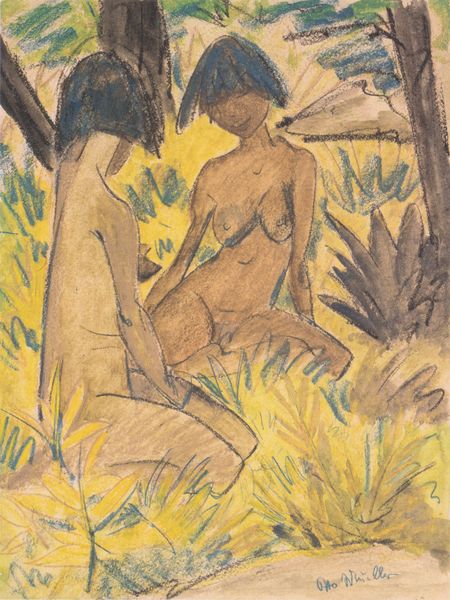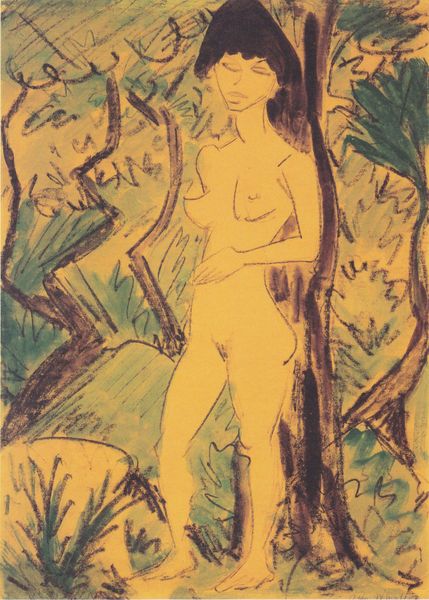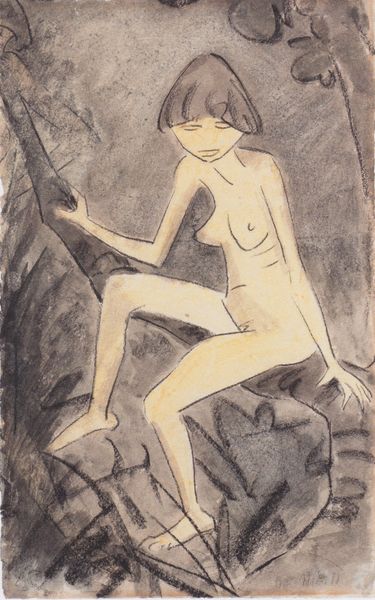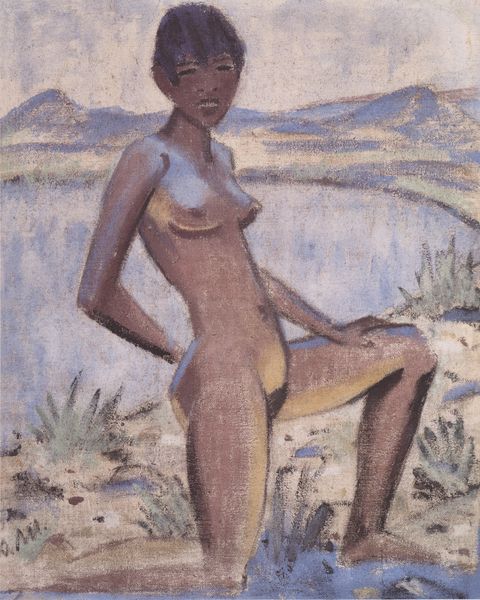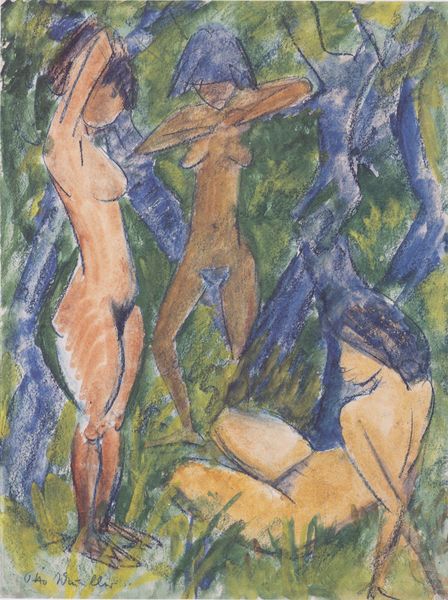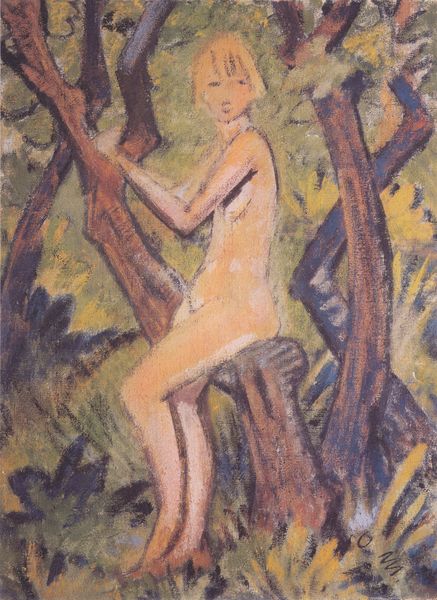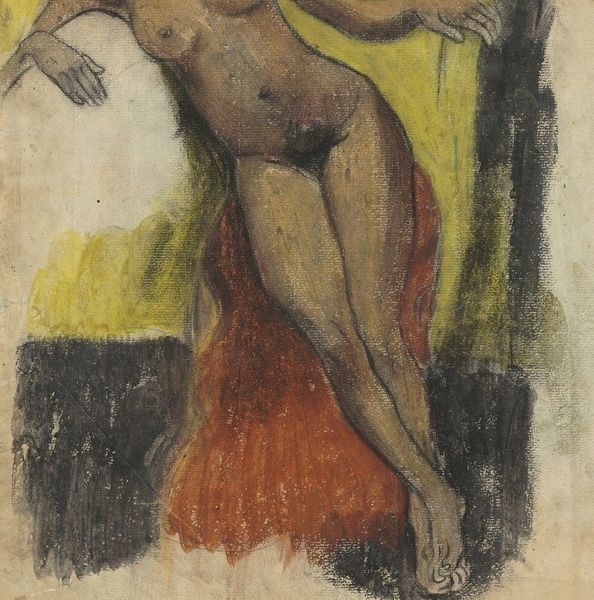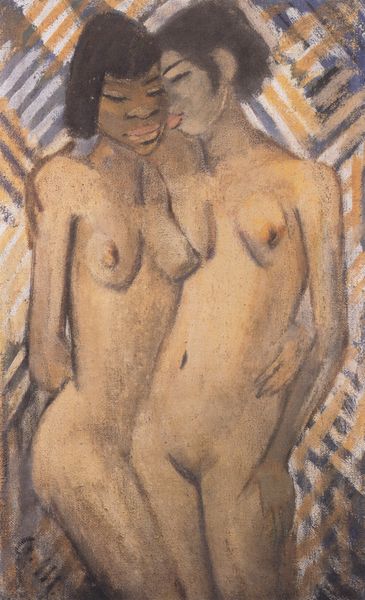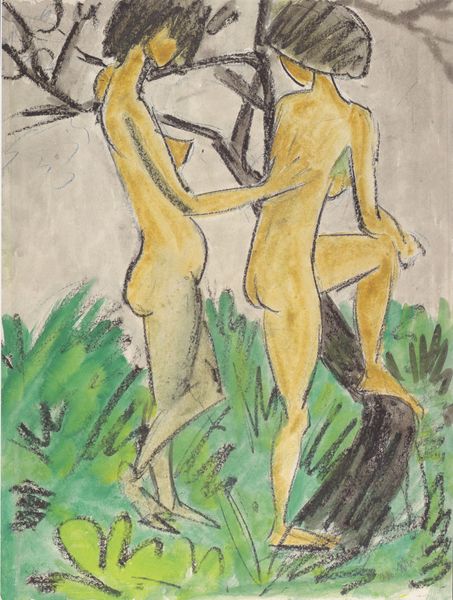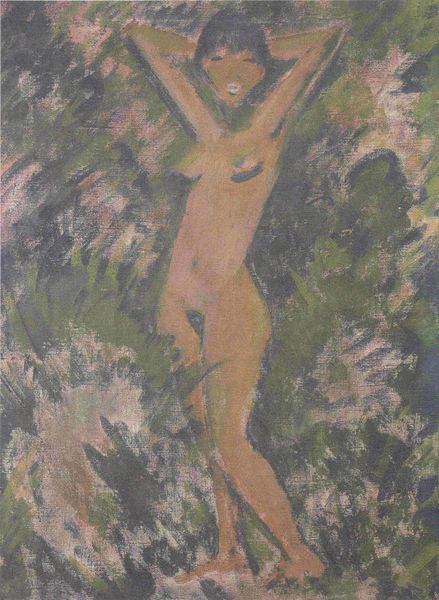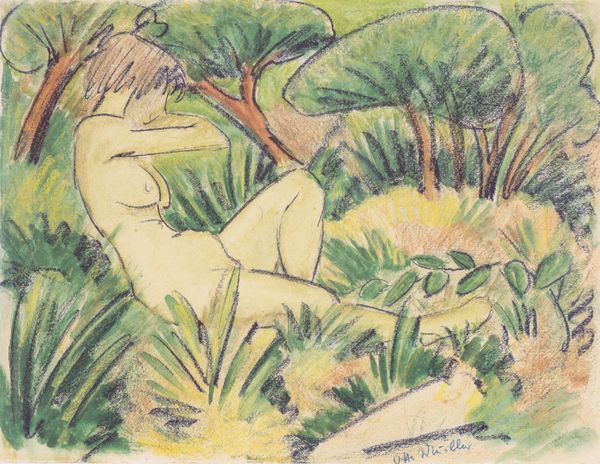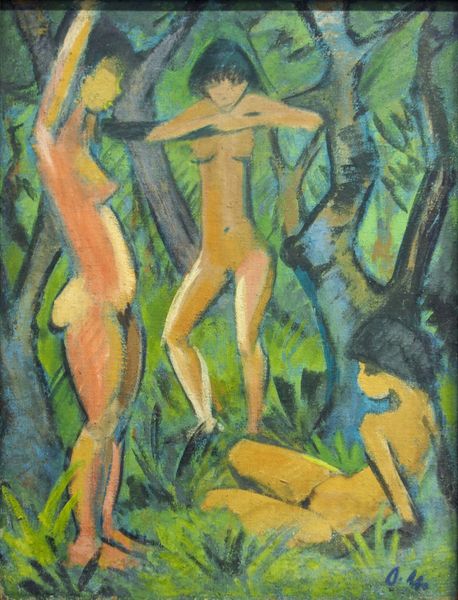
drawing, pastel
#
drawing
#
landscape
#
coloured pencil
#
expressionism
#
pastel
#
nude
Dimensions: 76.5 x 110 cm
Copyright: Public domain
Curator: This is Otto Mueller's "Sitzender Akt in Landschaft," or "Seated Nude in Landscape," created in 1927 using pastel and colored pencil. What springs to mind for you when you first encounter this piece? Editor: Hmm, peaceful melancholy, I think. She's got this daydreamy look, totally absorbed, almost disappearing into the green haze around her. The colors are soft, kind of muted… like a memory fading at the edges. Curator: That’s a lovely interpretation. It is worth noting that, in Mueller's wider body of work, particularly during this period, he's engaging with expressionism and also drawing from Die Brücke's exploration of natural settings and the nude form as a conduit for raw emotional expression. How does the work strike you in terms of his positioning of the figure? Editor: There's a vulnerability, I guess. She’s naked, yes, but not in a come-hither way. It’s more like she’s utterly exposed to nature, to her own thoughts. The landscape almost mirrors her interiority – it's wild, but in a quiet way. Curator: And consider how this relates to the societal constraints placed on women at the time, in the Weimar Republic era, where, even with new freedoms, the female body remained heavily policed. Editor: Totally. She's outside all that, lost in a private world. But it also strikes me… doesn't it also feel like he’s imposing something on her? The male gaze, perhaps unconsciously? She seems passively available for viewing. Curator: An astute point. While Mueller seeks to present an idealized vision of harmony between humankind and nature, he does so through the lens of a male artist navigating early 20th-century gender dynamics, making her a figure, but perhaps without agency. Editor: Right. It makes the piece way more complex, right? Beyond the pretty colors and tranquil pose. So what started as mellow and romantic for me, shifts to…well, what is she thinking and who gets to tell that story. Curator: Precisely. Viewing this work through the lens of both artistic intent and societal power structures creates a richer understanding of the artwork, offering questions instead of singular viewpoints. Editor: Absolutely! Suddenly, the quiet scene turns into this fascinating little debate… and I leave still wondering. Perfect!
Comments
No comments
Be the first to comment and join the conversation on the ultimate creative platform.
